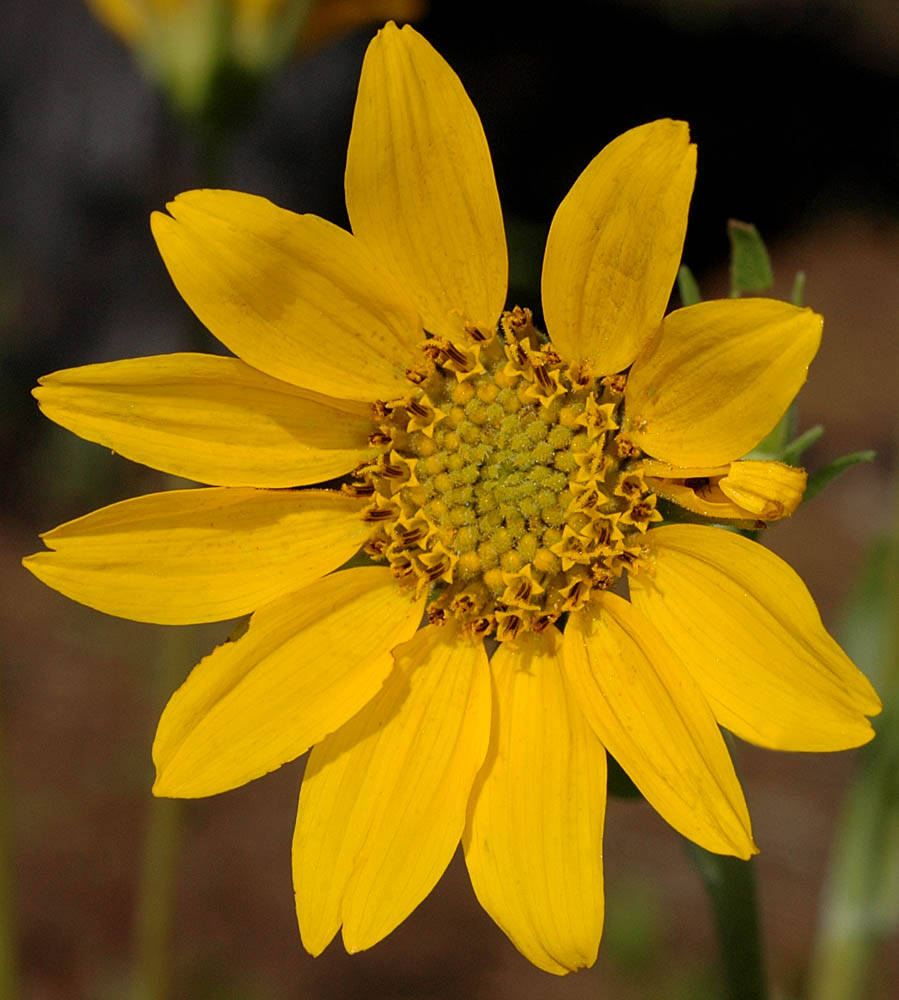Balsamorhiza
Balsamorhiza careyana
balsamroot
Carey's balsamroot
erect, scapose, unbranched.
forming clumps, 23–62 cm, green, sparsely villous-hirsute; more densely so below heads.
mainly basal; simple or pinnately compound, lanceolate to ovate;
cauline opposite, sometimes 1 additional pair of reduced cauline leaves alternate.
simple;
margins entire to slightly crenate;
surfaces hirsutulous to hirsute;
basal leaves in multiple rosettes;
blades deltate, 7–30 × 4.7–16 cm, bases cordate to hastate;
petioles 7.5–36 cm;
cauline proximal pair generally opposite, lanceolate;
distal alternate;
blades tapering at both ends, 2.5–8.2 × 0.4–2.8 cm;
petioles 0–7.5 cm.
with 1 main head, occasionally with up to 6 axillary heads per stem.
with 1 larger; terminal head and 1–6 smaller; axillary heads;
peduncles 0–20.5 cm.
broadly campanulate to hemispheric.
terminal 9–15 × 15–25 mm; axillary 9–13 × 6–12 mm.
flat to convex, paleate.
pistillate;
corollas yellow or rarely pink to red.
8–20 on large heads, 5–9 on small heads, yellow, persistent after drying;
rays 18–26 × 5–11 mm.
bisexual;
corollas yellow, 5-lobed.
6.5–8.5 mm.
in 2–4 series; outer equaling or surpassing inner.
ovate-lanceolate, 8–34 × 4–7 mm; outer often tapered to caudate or with acuminate tips, villous to tomentose.
4-sided; black, glabrous or strigillose;
pappi 0.
5.5–7.5 × 2–2.5 mm, generally strigillose, sometimes glabrous.
radiate.
lanceolate; acute, folded around fruits.
11–13 mm.
=38.
Balsamorhiza
Balsamorhiza careyana
Western Canada and United States. 12 species; 10 species treated in Flora.
Balsamorhiza is most closely related to Wyethia, from which it is distinguished by being scapose. Balsamorhiza is divided into two sections, both of which occur in Oregon. Section Artorhiza has cordate or sagittate, simple leaves; a taproot bearing multiple crowns; alternate stem leaves above the pair of opposite leaves; and often multiple heads per stem. Section Balsamorhiza has generally pinnately divided leaves (often simple in B. serrata); taproots bearing one or at most two crowns; one pair of opposite stem leaves; and a solitary head per stem. All species of Oregon Balsamorhiza have a chromosome number of n=19 and hybridize when they come together except for the polyploid B. macrophylla. Intersectional hybridization merely produces hybrid swarms, while intrasectional hybridization tends to produce widespread clines, leading to taxonomic confusion. Hybrid swarms are easily distinguished in the field by the wide variation in leaf division and pubescence within a given population. In the herbarium, when only one plant per population is present, hybrids are best distinguished by possessing leaves that are not as deeply divided as would be expected for the most similar-looking member of section Balsamorhiza, or by plants with pinnately divided leaves having either multiple heads per stem or alternate, in addition to opposite, stem leaves. Widths of heads are those of pressed specimens. Widths of pinnae are the width of full-sized pinnae from the middle of a fully developed leaf at their widest point (not including any lobes that may be present).
Open areas, open pine woodlands. Flowering Apr–Jul. 0–1300 m. BW, Casc, Col, ECas, Lava. WA. Native.
Balsamorhiza careyana usually grows east of the Cascades but intergrades broadly with B. deltoidea in the Cascades and along the Columbia River. Pure B. careyana is easily distinguished by a combination of strigillose fruit, ray florets that are persistent after drying, and generally more heads per stem than B. deltoidea. Cascade specimens can be difficult to determine and have been separated as B. careyana var. intermedia in other treatments. The two species should perhaps be considered varieties of the same species.
Abigail (Abby) Moore



